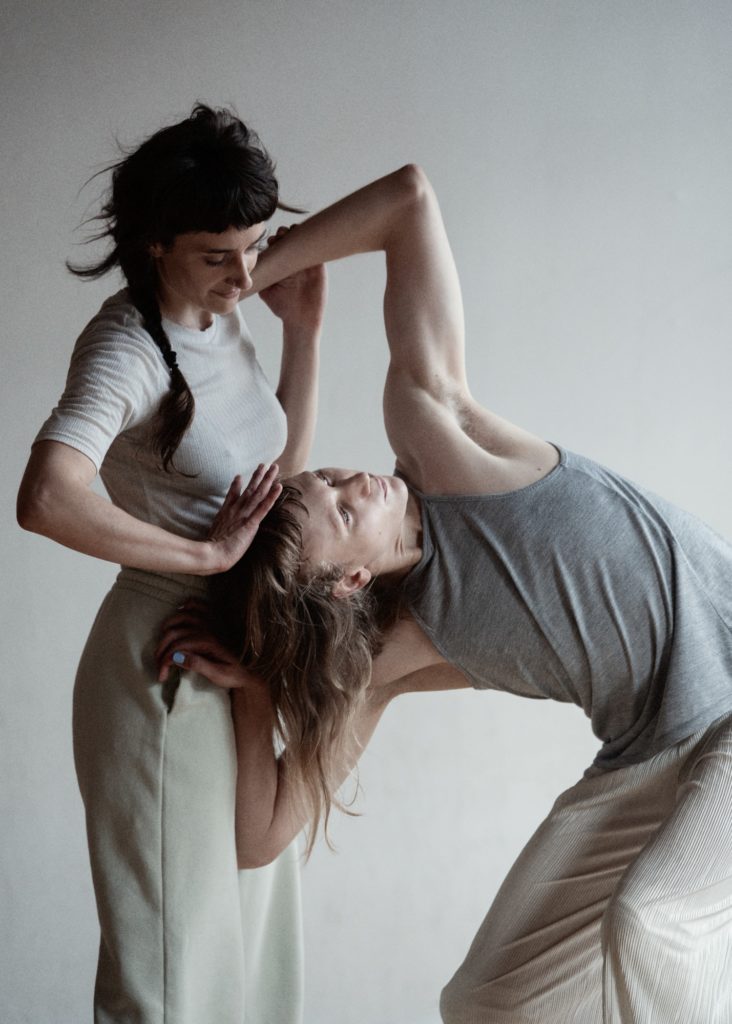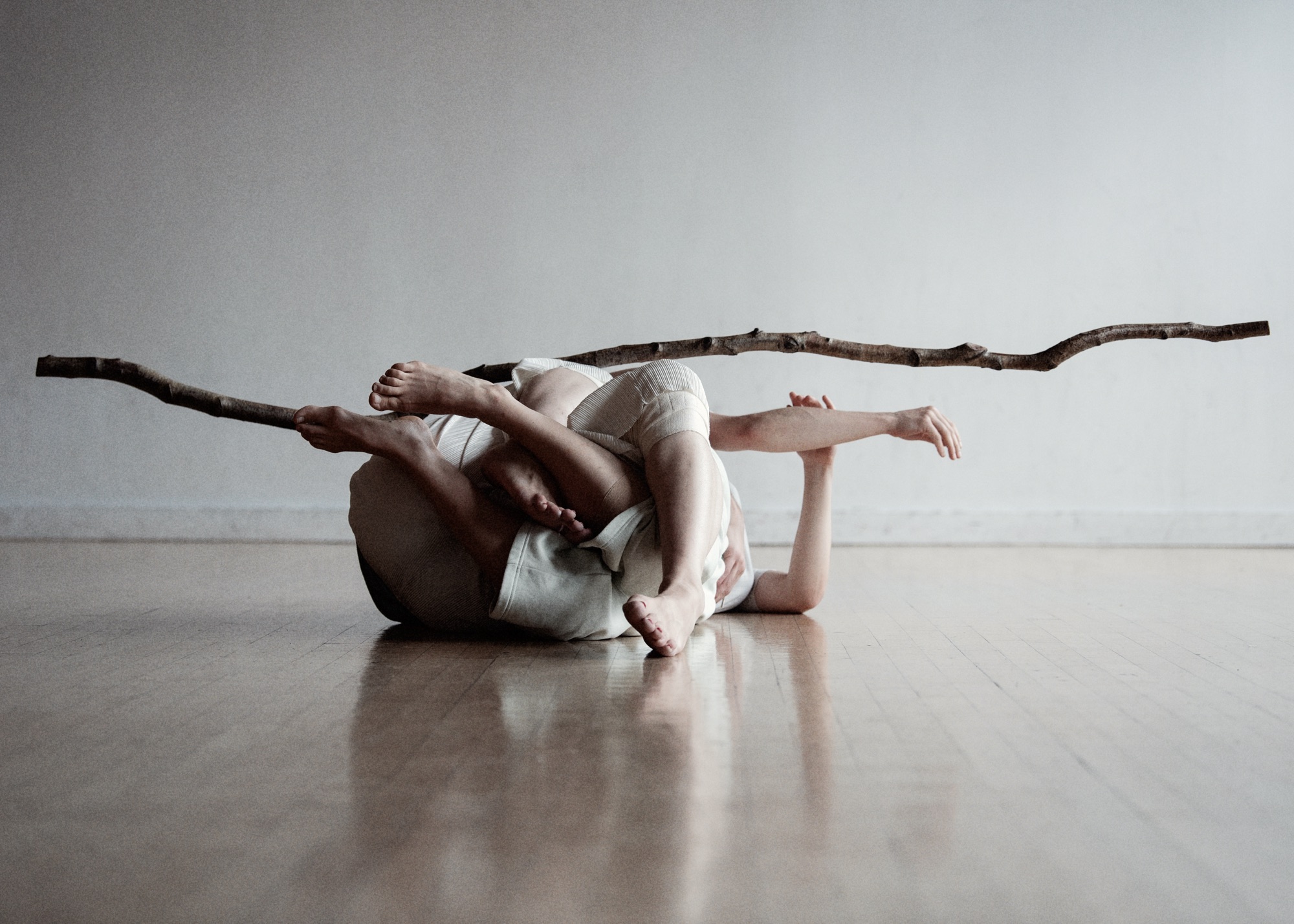Words by Qiao Lin Tan.
When I chatted with choreographer Kasia Witek about her new work Solastalgia on a Wednesday evening, I thought that she had the most wonderful way of speaking. She conversed in a quiet, thoughtful manner, often pondering on her words with a simple yet poetic lyricism. I later found out that despite having just come from a long day of rehearsals, she had still taken a brief moment to practice some yoga before speaking to me.
The work’s title Solastalgia, which premiered late last year, is a psychological term coined in recent years, describing eco-anxiety and the emotional distress caused by climate change. To Kasia, the term refers to the “feeling of being torn away from this connection that we naturally have to everything around us”. Today, with the natural world being framed as something separate and different from humans, Kasia believes that there is a need to consciously tap into and switch on that innate connection we have to our surroundings:
“Nature is often understood as this thing in a faraway romantic picture, you know, in a little golden frame with a drawing of a forest and some hills, and that’s nature, right? But really, it’s everything. It spills beyond the frame… What I’m trying to do with the piece is to let that sensuous world explode in front of people… Using touch and vision, an explosion of the senses.”
Before we continue, let us pause at this point in the article to try out an exercise that Kasia shared with me during our conversation.
Wherever you are – on the Tube, walking to work, falling asleep – take a moment to observe your surroundings. To notice things and sensations. It could be using your eyes, a practice of seeing. Or maybe it’s using touch or tapping into what you can hear.
Notice how these observations echo in your body, but try to resist following any thoughts. Just let it wash over you like a gentle wave.
.
.
.
Kasia’s activism and empathy for others began early on, with her choosing to become vegetarian as a child:
“This visceral experience of pain from beings other than humans was very present for me… To this day, it’s something that’s just so powerful to me. I feel everything when I think about it – I feel rage, I feel a complete lack of understanding of the situation and the system we live in. A lot of anger, a lot of sadness and grief.”
Her movement practice merged with her activism when she studied a postgraduate degree at The Place and begun developing her somatic practice, of which she cites dance maker and thinker Deborah Hay as a major influence:
“I found out that my somatic practice is a deep sensing of myself in a way that directly connects me to everything around me. It’s not any more a philosophy or theory as it is a very visceral bodily experience of feeling and being connected. I did this beautiful weeklong workshop with Deborah Hay, and she’s had a profound effect on me. Her work on how we can practice this connection on a daily basis made its way into my work.”

In Solastalgia, dancers take on the form of monuments where they work with a couple of tree branches. Kasia emphasises the importance of seeing the branch, not as an object, but as a presence that is very much alive.
“It was important for us that we didn’t try to describe the branch, that we didn’t concretise it or objectify it. We were doing our best to listen, to give it a platform to speak… It always felt like it was a partner. It has such a different body to ours, in a way. It’s very unyieliding, it’s not flexible. It’s very strong in dictating what it needs or how it needed us to move when we’re with it.”
“When we were improvising with it the very first week, what we found we needed was an extreme form of care and listening. This became a bottom line for us, that everything that we’re going to do in this piece is going to manifest care. It was transformative for me to see gentleness and softness as powerful in those very early rehearsals.”
The care and consideration with which Kasia and the dancers approached the work was evident to me. She describes the process of procuring branches to use in the piece: it was never snapped off the tree, and if they found a branch on the ground that was being used by other creatures (e.g. insects, moss, mushrooms), they left it alone.
When watching works related to large, urgent issues – such as the climate crisis or the multiple atrocities being committed across the world – I often find myself leaving the performance feeling hopeless and dejected at the state of the world. I shared this sentiment with Kasia and asked her what she would like audiences to take from Solastalgia.
“I completely relate to that. I think there is such a staggering amount of pain in the world. And if you’re an extra sensitive person, you know, how do you get through the day?
“But what I would love for people to feel is that we’re not in this alone. We’re in this together. That immediate sense of camaraderie. How it is to experience care. How it is to be surrounded by gentleness, and insisting on gentleness. The monuments we make in the piece, I want people to feel like it was raised for them. Because who raises monuments for gentleness, care, activists, or everyday people who are living their lives quietly in agreement with the land?”
By the end of our conversation, I felt calm and contemplative. Despite the largeness of the issue, having this conversation with Kasia about her concerns, her activism and her art seemed to alleviate the weight of doom. It did not fix the issue, but it was a moment of rejuvenation, a communal holding of one another. Kasia’s gentle demeanour, introspection and whole-hearted care for the world reminded me, as cliché as it sounds, that love for others is the driving force behind the good that we want to see in our world.
“I really love this work. It’s so close to my heart. I adore it.”
Credits:
Choreography: Kasia Witek. Dancers: Elisa Vassena, Anders Duckworth, Tora Hed. Original music score: Alex Roth. Double bass: James Opstad. Cello: Alice Purton. Mentor: Joe Moran. Videography: Ruta Puzaite.
